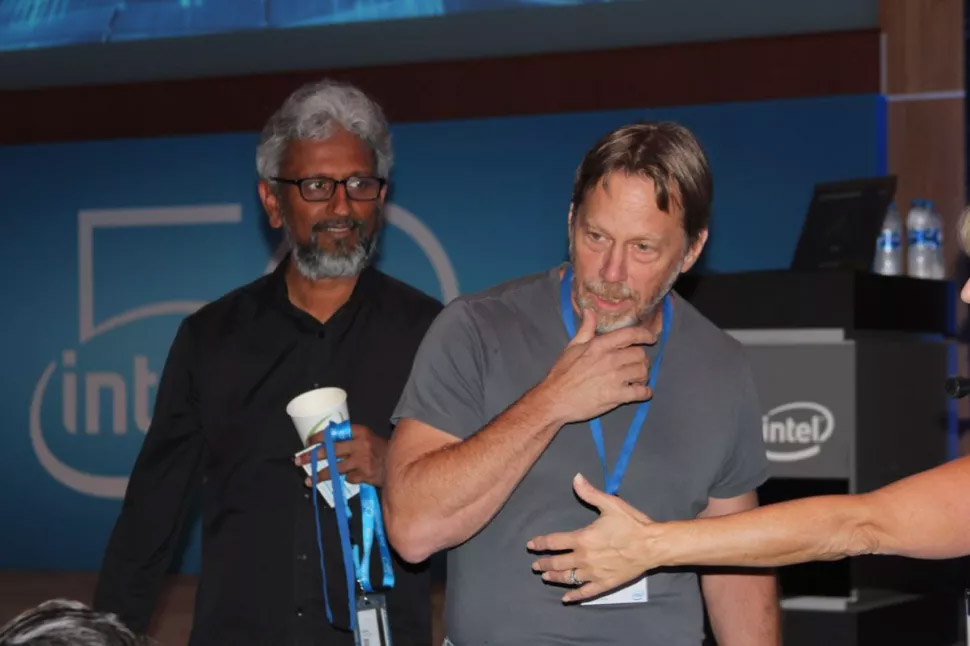
Intel CEO Bob Swan
Intel Corporation released Q2 financials. 2020, which announced another delay in the transition to the 7 nm process technology. The plans were postponed for another six months, so now the introduction of 7 nm is planned not earlier than the end of 2021 - the beginning of 2022. In total, the lag from Intel's internal roadmap has grown to 12 months .
Curiously, Intel was planning to move quickly to 7nm because it was having problems implementing the 10nm process technology. Some analysts are of the opinion that in such a situation, one can think of going immediately to 5 nm.
The company's chief executive Bob Swan told investors that the Ponte Vecchio HPC GPU will not be released until late 2021 or early 2022. It should be Intel's first 7nm chip.

The 7nm Intel processor for personal computers will be released no earlier than the end of 2022 - early 2023, and the first server processor for data centers - no earlier than the first half of 2023.
According to Swan, the company identified a "defective mode" in its 7nm process technology, which caused "degradation of the process standard." As a result, Intel provided for a “contingency plan,” including the use of third-party chip factories. The company will also use third-party factories for future 7nm Ponte Vecchio GPUs.
Ponte Vecchio is manufactured in a chiplet design, and some of the chiplets will be outsourced to third-party contractors.
The first 7nm Granite Rapids server processors will also come out late in 2023. This is dangerous against the background of the fact that AMD is on the plan to produce EPYC server chips and plans to release 5nm Genoa processors by the end of 2022.
Swan also said the first 10nm desktop Alder Lake processors will ship in the second half of 2021.
In fact, TSMC plans to master the 3nm nodes in the same time frame as Intel's new 7nm graphics.
The delay in the 7nm transition represents another setback for Intel, which has had trouble mastering the 10nm process for several years. These delays have allowed AMD to take the lead in processor development from Intel for the first time in history, sparking a price war in the market as Intel battles a better-tech x86 competitor, not to mention the new Amazon Graviton 2 ARM chips, also based on 7nm TSMC process technology.
Apple recently announced that it is switching from Intel chips to its own 7nm ARM processors . And leading chip architect, star Jim Keller, recently left the company.

In June 2020, Intel announced that Lead Microelectronics Engineer Jim Keller was leaving the company.
Intel said it plans to increase shipments of 10nm chips by 20% over previous forecasts. Intel's new plan focuses on getting another "full node" of performance based on the current 10nm node, meaning the 10nm process will take longer than planned and will ease the transition to 7nm. Intel has implemented a similar trick with 14nm processors through a series of "+" revisions that have added incremental performance improvements up to 14nm +++. So she has a track record of successful inter-node improvements that will help her stay competitive until she fixes the 7nm process.
Intel has always used third-party factories, which currently account for about 20% of its production, for low-margin, non-processor-based products. Intel's new plans for more aggressive use of external fabrics could lead it to use them for core logic like processors and GPUs, which the company hasn't done in the past. Ultimately, Intel could face a significant decrease in margins if it outsource a significant portion of its high-yield products to third parties. Relying on an external supplier to produce advanced components is very risky, as Intel will have to compete with Apple, Nvidia and AMD, including for manufacturing capacity.
After the publication of the financial report, Intel shares fell 9%, AMD shares rose 6% amid the recent announcement of a family of desktop CPUs based on the Zen 2 architecture (7 nm) - and for the first time in history overtook Intel shares at par ($ 61). Despite the lag in share price, Intel is almost four times ahead of AMD in market capitalization: $ 254 billion versus $ 64 billion. Taiwanese TSMC has a market value of $ 323 billion.
At first glance, it seems that Intel's delay by six months is small, but in reality it will be have a long-term domino effect. It means that within a few years, Intel will keep up with the technology of AMD and Nvidia's, writesReuters. In other words, in line with 7 nm Intel is already uncompetitive and can return to a full-fledged struggle only after switching to 5 nm.
